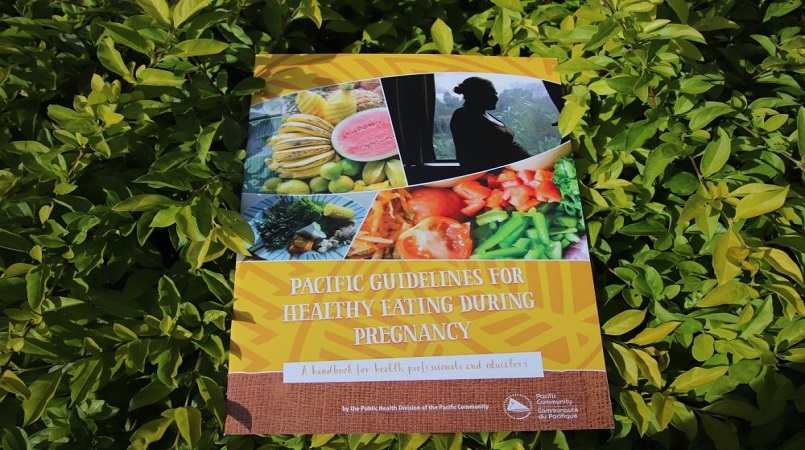
A healthy diet is critical to the healthy development of a growing baby and pregnancy presents an opportunity to promote good health and break the cycle of non-communicable diseases (NCDs).
The Pacific guidelines for healthy eating during pregnancy is a handbook for health professionals and educators designed to maximise health outcomes for both expectant mother and her child.
Dr Si Thu Win Tin, team leader for the Public Health Division’s (PHD) NCD Prevention and Control Programme at the Pacific Community (SPC) says, “To address the NCD crises in the Pacific region, SPC advocates for early interventions to nurture a future population with reduced risks of developing NCDs through policies and guidelines”.
Recommended by nutritionists from the region and developed by SPC, the Pacific guidelines for healthy eating during pregnancy serves the purpose of providing health professionals with a guide to deliver standardised and quality nutrition care that is informed by international guidelines and suitable for Pacific context.
The prevalence of overweight and obesity in Pacific women, including those within childbearing age is extremely high for example, more than 60% of women in American Samoa, Cook Islands, FSM, Kiribati, Niue, Nauru, Samoa, Tokelau and Tonga, are obese.
Maternal pre-pregnancy obesity increases the risk of gestational diabetes and birth complications as well as predisposing the child to low or high birthweight and at risk of developing NCDs later in life, amongst other health issues. Optimal nutrition during pregnancy is crucial for better health outcomes for both mother and child
It is critical during this time to reduce health risks such as maternal and childhood obesity, gestational diabetes, low birthweight babies or big babies, and nutrient deficiencies, which are also areas of concerns for pregnant women in the Pacific.
